It looks like you're using an Ad Blocker.
Please white-list or disable AboveTopSecret.com in your ad-blocking tool.
Thank you.
Some features of ATS will be disabled while you continue to use an ad-blocker.
share:
Because Chemtrails are a fantasy. No one is spraying us with dope to make us lazy. The only thing that's being sprayed is bug killer and not enough
of that to even control mosquitos. Of course as with all absurd theories throw insults at the people who point out the absurdity rather than support
said theory. I see that daily on here. Daily. reply to: tmeister182
Well at least we have the knowledge that that isn't going to happen. However those awful things did happen just not with the government's help. Our
government had NOTHING TO DO WITH THE EVENTS OF 911. Or any of those other events you mention. But you're entitled to your thoughts so carry on good
man.
a reply to: douglas5
a reply to: douglas5
a reply to: hellobruce
I thought I would detail a bit more on this cut beam.
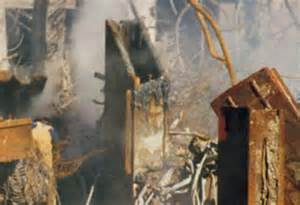
If this was a column cut during the cleanup by a thermic lance then why was it cut at an angle so high up?
Saw this question in a forum which seemed to make a lot of sense.
He makes a lot of sense with that question.
Here we go. Wonder why the buildings collapsed at freefall speed? With no apparent resistance below?
This guy is clever.
Demolition. Correct! A Thermic Lance? Yeah right! Apparently this picture was taken BEFORE the Ironworker welders and cutters got there. And there would be absolutely no reason for that beam to have been cut at a diagonal angle during the removal of the debris.
This picture was taken during the search and rescue. No cleanup would be going on at that time!
I thought I would detail a bit more on this cut beam.

If this was a column cut during the cleanup by a thermic lance then why was it cut at an angle so high up?
Saw this question in a forum which seemed to make a lot of sense.
One question would be why a welder would cut the beam so high if the purpose was to remove the beam from the area. Welders don't really like to cut huge steel beams where the slag will fly back at their face. The slag definately is from the inside out on the lowest face. It appears that the force from the cutting jet was from top to bottom across at an angle.
Its also a rather clean cut. A torch cut with the beam pushing down on the slag would have allowed for reattachment of the molten slag. That happens to me pretty often, cutting even 3/4" plate. It seems to me there should have been broken reattachment points unless the beam was cut all the way across at once and slipped over while the steel was molten. Also like the expert says, a crane would have had to have been lifting the beam as a welder cut it.
He makes a lot of sense with that question.
Here we go. Wonder why the buildings collapsed at freefall speed? With no apparent resistance below?
This guy is clever.
Unless you wanted the beam to shoot out or slide to one side, it would have been easier to cut with a torch the connecting points which were probably bolts or rivets where the beam had its seperating joint above.
Demolitions will cut the beam at a slant in two places to allow for an instantaneous slipping out from under the load to allow for a near free-fall speed to give the collapsing mass the most accelleration to gain the most kinetic energy to demolish the structure below and the mass itself.
The speed at which destruction below the collapse zone progressed downwards indicates a need for very fast dislodging of beams which would require slant cuts. But there should be a lot of slant cuts, not one or two. Unless a few slant cuts were used for guiding the collapse and for downward acceleration, and some kind of joint dismemberment was used to seperate the columns at the joints to be flung apart by the kinetic mass generated by the slant-cut sections.
Demolition. Correct! A Thermic Lance? Yeah right! Apparently this picture was taken BEFORE the Ironworker welders and cutters got there. And there would be absolutely no reason for that beam to have been cut at a diagonal angle during the removal of the debris.
This picture was taken during the search and rescue. No cleanup would be going on at that time!
a reply to: Hilux1996
The Bigger Picture
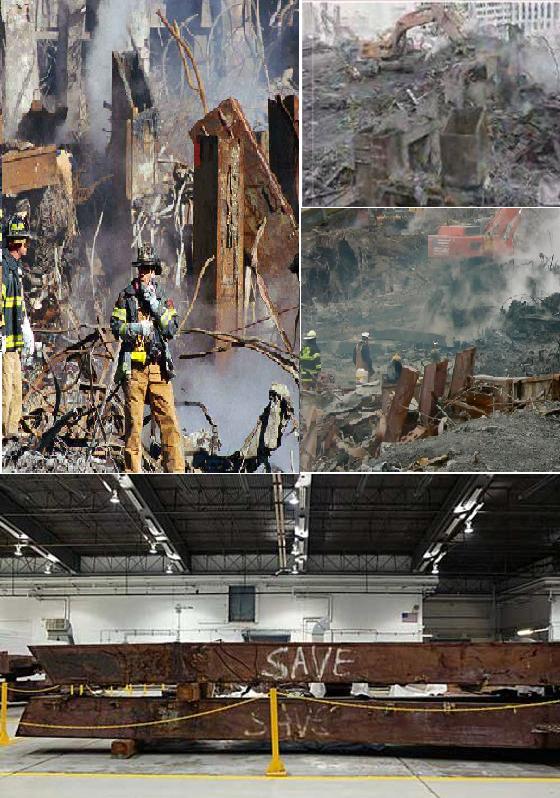
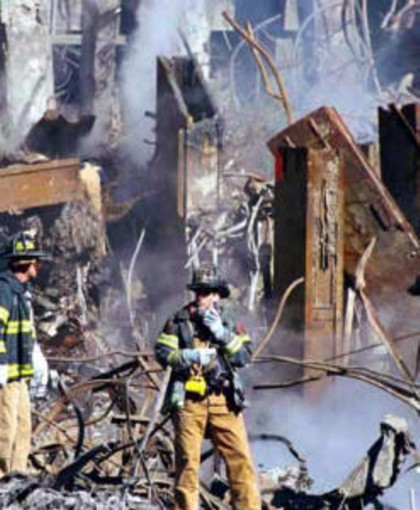
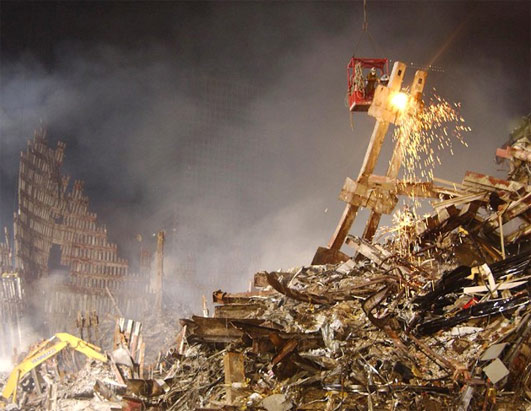
In How its Done
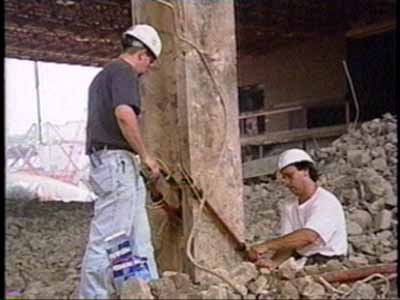
It can Be before or After The incident of 911
thermite-igniter
www2.ae911truth.org...
PatentUS6183569
www2.ae911truth.org...
For this to Happen Someone need to see if there is any Logs books Of Activity of the WTC Buildings
as Unusual Work Detail At Night within 2000 & 2001 for example
Who they were and who they worked for Businesses that went in and out
The Bigger Picture



In How its Done

It can Be before or After The incident of 911
thermite-igniter
www2.ae911truth.org...
PatentUS6183569
www2.ae911truth.org...
For this to Happen Someone need to see if there is any Logs books Of Activity of the WTC Buildings
as Unusual Work Detail At Night within 2000 & 2001 for example
Who they were and who they worked for Businesses that went in and out
edit on 2-10-2014 by Wolfenz because: (no reason given)
Nice pictures of the beams with the diagonal cuts and the words 'save' painted on the sides.
So why would the perpetrators write save on the sides?
They wouldn't.
Notice how the one worker was in a basket cutting the beam? I'll bet he cut at what ever angle was the safest. Not only 90 degrees.
So why would the perpetrators write save on the sides?
They wouldn't.
Notice how the one worker was in a basket cutting the beam? I'll bet he cut at what ever angle was the safest. Not only 90 degrees.
originally posted by: samkent
Nice pictures of the beams with the diagonal cuts and the words 'save' painted on the sides.
So why would the perpetrators write save on the sides?
They wouldn't.
Notice how the one worker was in a basket cutting the beam? I'll bet he cut at what ever angle was the safest. Not only 90 degrees.
I think the guy in the basket was splitting those 2 beams by cutting the cross member. If he was going to cut the verical beam on a slant the way the others were it would need to be supported while he cuts and it would be farther down.
I am not sating that the beams were cut like that during the collapse, I am just saying that the guy in the basket is NOT trying to top that beam because it would be very dangerous doing it without a crane to take the weight off.
The perps never market those to be saved. They didn't stick around for the clean-up.
originally posted by: AutumnWitch657
Because when we say truthers that's exactly how we mean it. It's not like we're being covert about it. a reply to: Bundy
Does not compute... I dont get what you mean here. I know people aren't being covert about "it" when they call someone a truther. IMO what they aren't being covert about is how stupid they are. To call someone a truther as an insult is about as stupid as it gets. Truther is a really short way of saying "You're so stupid for trying to figure stuff out". Do you want to be a part of that? *Sigh*. The championing of idiocy is amazing these days.
edit on 2-10-2014 by Bundy because: (no reason given)
Every normal person I talk to knows that the official story is bunk. They may not all have one person to point the finger at, but without a doubt 100%
of the people I deal with know. They don't think, they know, they know that it was a controlled demolition and that the owner of the towers (who just
leased them for 99 years) took out a four billion dollar insurance on them and the next week they fell down.
Oh and he got extra money because they were brought down by terrorism.
Its pretty funny to see you people trying to push the long dead fallacy, the fairy tale of some homeless guys in a cave doing this with box cutters, its so absurd, only the shills believe it at this point.
I enjoy coming here and watching them all try and convince themselves that anyone believes them. Priceless.
Oh and he got extra money because they were brought down by terrorism.
Its pretty funny to see you people trying to push the long dead fallacy, the fairy tale of some homeless guys in a cave doing this with box cutters, its so absurd, only the shills believe it at this point.
I enjoy coming here and watching them all try and convince themselves that anyone believes them. Priceless.
edit on 2-10-2014 by AmenStop
because: (no reason given)
a reply to: hellobruce
Your video claims that they are cutting something on "the same angle" yet we see nothing cut, and no angle!
Why do you persist in believing these silly claims!
Your video claims that they are cutting something on "the same angle" yet we see nothing cut, and no angle!
Why do you persist in believing these silly claims!
originally posted by: douglas5
originally posted by: woogleuk
Ok, this has to be the worst theory involving the attack on 11/9/01.
You need a minimum yield on an atomic explosion to achieve critical mass, 10-20 ton is as low as they can get it right?
Are the loons who came up with this nuke theory honestly trying to tell us no-one noticed an explosion of that size on that day?
To the hoax bin, or 404, anything, this is just stupid.
The lightest nuclear warhead ever acknowledged to have been manufactured by the U.S. is the W54, which was used in both the Davy Crockett 120 mm recoilless rifle–launched warhead, and the backpack-carried version called the Mk-54 SADM (Special Atomic Demolition Munition). The bare warhead package was an 11 in by 16 in (28 cm by 41 cm) cylinder that weighed 51 lbs (23 kg). It was, however, small enough to fit in a footlocker-sized container.
And those W54 projectiles were EXACTLY what I was referring to...with a 10-20 ton explosion...which would have been noticed had they been used in the towers.
a reply to: AmenStop
Here we go the ordinary man in the street who has only typical demolition videos to base what he saw happen on.
Do YOU personally have any experience designing structures or day to day dealings with the terminology used, do you have any idea of the loadings on a structure of that size, when major components fail.
Have you every seen or used equipment to test various building materials/components to destruction to see how they behave.
Or is everything base on what other mistakenly think should happen
Here we go the ordinary man in the street who has only typical demolition videos to base what he saw happen on.
Do YOU personally have any experience designing structures or day to day dealings with the terminology used, do you have any idea of the loadings on a structure of that size, when major components fail.
Have you every seen or used equipment to test various building materials/components to destruction to see how they behave.
Or is everything base on what other mistakenly think should happen
originally posted by: Hilux1996
a reply to: hellobruce
I thought I would detail a bit more on this cut beam.
If this was a column cut during the cleanup by a thermic lance then why was it cut at an angle so high up?
Well I think looking at the FULL picture that is explained.

Not a lot of room around that column below the cut to do it is there!
edit on 3-10-2014 by wmd_2008 because: (no reason given)
You only need to do a moderate amount of research on the events of 9/11 to come to the realisation that the Official Story (OS) is garbage. It is
truly astonishing that so many people fail to do even basic research on one of the most important events in modern history.
This is perhaps slightly off topic, or it's a very different angle that I hope is enough so on topic. Since I'm unable to start a thread on this
subject - don't have enough WATS points (shame on me LOL) - I have a most crucial question about 9/11 of which at least effectively NO ONE has ever
asked. Perhaps someone else can do a thread on it:
If the official spiel is true, why hasn't there been an expert on military history and/or weaponry acknowledge the attack as by far THE greatest, most effective tactical strike of ALL time; that is, (allegedly) THE most damage caused by THE least amount of resources - allegedly jet fuel only - EVER, period, without exception by FAR?
Regardless of hatred of the enemy (or perceived enemy), one would think SOMEONE from, say, the Pentagon (for example) would HAVE to acknowledge such an unprecedentedly brilliant tactical strike IF it was true.
Physics doesn't lie, and no one, namely of the aforementioned expert variety, has the unmitigated gall to tell a whopper THAT huge, so they've all kept entirely predictably mum about it.
If the official spiel is true, why hasn't there been an expert on military history and/or weaponry acknowledge the attack as by far THE greatest, most effective tactical strike of ALL time; that is, (allegedly) THE most damage caused by THE least amount of resources - allegedly jet fuel only - EVER, period, without exception by FAR?
Regardless of hatred of the enemy (or perceived enemy), one would think SOMEONE from, say, the Pentagon (for example) would HAVE to acknowledge such an unprecedentedly brilliant tactical strike IF it was true.
Physics doesn't lie, and no one, namely of the aforementioned expert variety, has the unmitigated gall to tell a whopper THAT huge, so they've all kept entirely predictably mum about it.
new topics
-
Simple Thanksgiving
Food and Cooking: 42 minutes ago -
Trump could make a peaceful American Revolution
US Political Madness: 4 hours ago -
Trump Presidential Transition Team will not use GSA or Government entities to come to DC
US Political Madness: 4 hours ago -
Mind Blowing Cave under someones land
Fragile Earth: 4 hours ago -
The Party of Peace - Trump Cabinet Picks Targeted with Death Threats
US Political Madness: 5 hours ago -
V.P. Kamala Harris releases a video and nobody understands why
US Political Madness: 8 hours ago
top topics
-
D.B. Cooper mystery may be solved
General Conspiracies: 13 hours ago, 21 flags -
V.P. Kamala Harris releases a video and nobody understands why
US Political Madness: 8 hours ago, 16 flags -
The Party of Peace - Trump Cabinet Picks Targeted with Death Threats
US Political Madness: 5 hours ago, 13 flags -
Mind Blowing Cave under someones land
Fragile Earth: 4 hours ago, 12 flags -
Trump Presidential Transition Team will not use GSA or Government entities to come to DC
US Political Madness: 4 hours ago, 12 flags -
Trump could make a peaceful American Revolution
US Political Madness: 4 hours ago, 10 flags -
Simple Thanksgiving
Food and Cooking: 42 minutes ago, 3 flags
active topics
-
Simple Thanksgiving
Food and Cooking • 2 • : Flyingclaydisk -
Post A Funny (T&C Friendly) Pic Part IV: The LOL awakens!
General Chit Chat • 7837 • : Flyingclaydisk -
V.P. Kamala Harris releases a video and nobody understands why
US Political Madness • 61 • : Flyingclaydisk -
Trump Presidential Transition Team will not use GSA or Government entities to come to DC
US Political Madness • 8 • : Flyingclaydisk -
The Acronym Game .. Pt.4
General Chit Chat • 995 • : JJproductions -
Trump could make a peaceful American Revolution
US Political Madness • 8 • : Flyingclaydisk -
Mind Blowing Cave under someones land
Fragile Earth • 14 • : Flyingclaydisk -
I thought Trump was the existential threat?
World War Three • 105 • : Xtrozero -
The Party of Peace - Trump Cabinet Picks Targeted with Death Threats
US Political Madness • 8 • : DontTreadOnMe -
President-Elect DONALD TRUMP's 2nd-Term Administration Takes Shape.
Political Ideology • 254 • : WeMustCare

